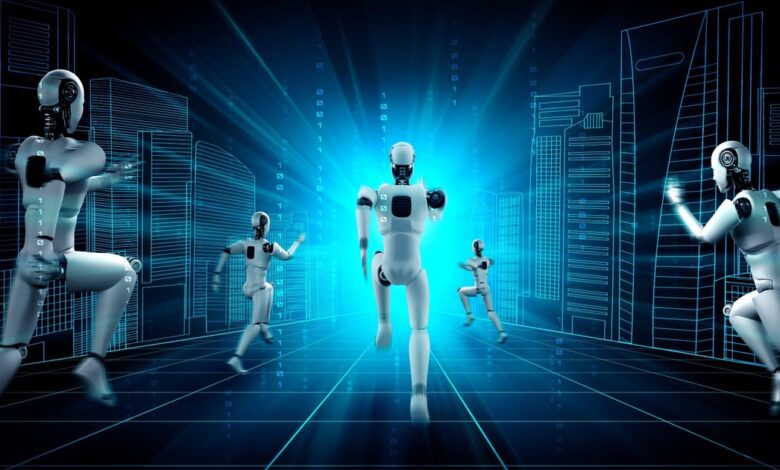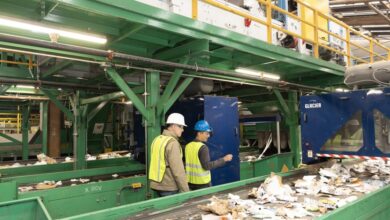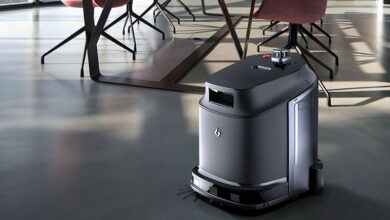More Robots Are Coming, But Where Are They Going?

Robots have been around for decades, but they’re becoming a lot more interesting now given technological advances and the expanding use cases. For example, robotic arms have been used in manufacturing for tasks that require repeatable precision, such as painting, pick and place operations, and welding, but now, various types of robots are finding their way into other industries such as agriculture, ecommerce, and logistics.
“It’s a trend that’s almost universal,” says Peter Finn, managing director of industrial technology at investment banking firm Brown Gibbons Lang & Company. “In recent years, it’s been more around industrial use cases like warehouse logistics fulfillment. During COVID, when there was this massive shift to buying online versus in-store, and the labor force was constrained anyway, companies were trying to find ways to get the same or higher productivity using fewer people as part of the solution, certainly for ecommerce, but those dynamics are relevant [in other industries] whether it’s ag, construction, any number of areas.”
There Are Many Benefits
Most robots today are used for narrow, repeatable tasks, as opposed to the more general-purpose humanoid robots portrayed in science fiction that look, move, and reason a lot like humans. It turns out there are very good reasons why robots in real life have been purpose-built, not the least of which is the current state of the art.
Right now, automotive industry automation is expanding the number of robotics use cases while other industries are seeking similar sorts of productivity gains, cost reductions and competitive advantage.
“It used to be that automation was only applicable in very structured cases and now we’re seeing less structured cases. It’s just a question of who can get the formula right and who can get the technology far enough along that it makes ROI sense to everybody,” says George Konidaris, co-founder and chief roboticist at Realtime Robotics and Brown University robotics professor.
Robots are also helping to enable business transformation.
“In things like logistics where you operate an ecommerce business that needs to ship a million items a day and they’re all slightly different, the fact you can automate that is relatively new, like in the last 10 to 15 years,” says Konidaris. “I think robotics is one of the enabling technologies that’s making that happen, making it cheap and accessible.”
There Are Also Challenges
One of the main challenges with robots is their inherent complexity that includes both hardware and software challenges. Beyond that, there is the question of how to optimize the interaction between robots and between robots and humans. Another challenge is the steep cost of robotics systems versus the ROI they deliver.
Startups in the space are experiencing mixed results because robots are expensive to design and build, there’s a shortage of R&D talent and what they’re selling is expensive. They also need to demonstrate ROI to customers and, depending on the industry, the robots may not fit neatly into the existing environment.
For example, warehouses weren’t designed for a robotic workforce. The same is true for big box and grocery stores, which have been widening their aisles with an eye toward automation.
Two of the most significant challenges, according to Erik Nieves, CEO and co-founder of robotic and automated material handling solutions provider Plus One Robotics, are the customer’s culture and buy-in from existing staff. Will they view the robot as a threat to their livelihood, a hassle that doesn’t work all the time or a tool that helps them do their jobs more efficiently?
“One of the biggest misconceptions I have to clarify is that these AI robotics systems are not meant to create a ‘lights out,’ fully automated warehouse or factory, at least not with our current technological capabilities,” says Nieves. “There will always be novel edge cases and exceptions that require human reasoning. So, rather than full autonomy, we need to design AI robotics for seamless human-robot collaboration and agile observation under human supervision. To put a finer point on it, don’t wait for a magical robot so smart it can do everything. Instead, connect a robot to a smart person.”
There are also legal challenges. One thing robotics companies are doing is investing in patent portfolios to protect their tech investments, such as to prevent copying, according to John Powell, partner and patent chair at law firm Sunstein LLP. They’re also building patent portfolios in the event they need to use them defensively if a competitor asserts a patent against them. By having their own patent(s) to assert against the competitor, the company may be able to force a cross-licensing arrangement, thereby allowing both companies to continue to do business.
In addition, robotics companies are monitoring other companies in their space to stay current on competitive patent filings and understand patent risks. In some cases, with less significant inventions, instead of filing for patent protection, organizations may choose to publish a tech paper describing the invention to create prior art and prevent a competitor from later patenting the invention. These so called “defensive publications” may be reported in more obscure publications to reduce the risk of alerting competitors, but still achieve the effect of creating prior art.
Interestingly, organizations that purchase robotics solutions can also be sued for patent infringement for use of the solutions. “When you purchase a robotics solution, you want to understand the potential for patent litigation for your use of the solution purchased from a vendor,” says Powell. “When negotiating the vendor contract, you need to make sure you have adequate indemnification from the vendor for a patent infringement claim by a third party. When such a claim is made, the company should notify the vendor, so the vendor can defend and indemnify the company against the claim of infringement, as required in the contract.”
What to Expect in the Near Future
Use cases will also continue to expand across industries while hardware and software-related tech continues to advance.
“It’s the personal computer moment of robotics, except that it’s going to last a decade because these processes are so much more complicated and intricate,” says Realtime Robotics’ Konidaris. “I think warehouses and logistics [use cases] will grow a lot. You’ll see very manual efforts that are very expensive and hard to find labor for get automated in a vertical way. Then, after that’s done, you’ll see robots in fast food restaurants.”
There will also be winning and losing vendors. Brown Gibbons Lang & Company’s Finn says in 2021, it was possible to raise capital by showing a large total addressable market, early adoption and some visibility around that — all of which translate to growth. While growth remains important, investors want to know if the unit economics are compelling enough for the customer to keep rolling them out across a broader footprint and whether that translates into profitability.
“[Vendors] have been trimming their ambitions of what they want to solve for, and it’s making sure you solve for that one thing in a way that works economically, relative to a labor-dependent solution at the customer level and in a way that translates to profitability,” says Finn. “Some companies have been able to pivot, and others have struggled with that. I think it’s resulting in a shakeout overall where [some] companies are going to make that pivot successfully and others may find homes in large organizations.”



